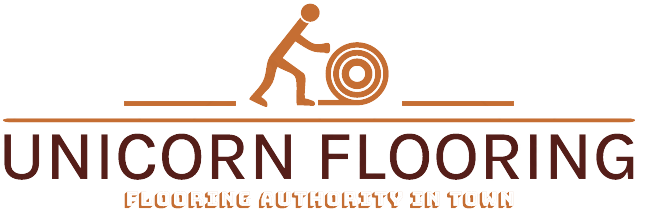Assembly Line Flooring in Pakistan
An assembly line is only as strong as the surface beneath it. Flooring on production lines must withstand constant load, chemical spills, heavy traffic, static-sensitive electronics, forklifts, trolleys, cleaning regimens, and the strict uptime demands of manufacturing. In Pakistan — where industries range from textiles and automotive to food processing, electronics and pharmaceuticals — choosing the right flooring system is both a technical and commercial decision. This post walks you through the practicalities, options, costs, installation steps, maintenance and recommendations for assembly line flooring in Pakistan so you can pick a solution that minimizes downtime, reduces lifecycle costs, and keeps workers safe.
Why assembly-line flooring matters?
Flooring in an assembly area affects:
Durability & Uptime
Poor floors crack, dust, or delaminate — causing downtime and rework. Seamless, engineered floors reduce repair frequency and keep lines running.
Safety
Slip resistance, chemical resistance, and clear demarcation reduce accidents and improve ergonomics.
Product Quality
Dust, particulates and static discharge can damage components, especially in electronics and precision manufacturing.
Cleanability & Hygiene
Food, pharma and some electronics sectors require surfaces that are easy to clean and sanitize.
Total Cost of Ownership
A slightly higher upfront cost for the right resinous system often pays back through reduced maintenance and longer life. Epoxy and similar resin floors are widely used for this reason.
Key Performance Requirements for Assembly Line Floors
Before choosing a system, quantify your needs:
- Load & impact resistance: Forklifts, conveyors and dropped components impose point and distributed loads. Choose a system rated for mechanical/impact wear.
- Abrasion resistance: High traffic and moving equipment wear surfaces — abrasion resistance matters.
- Chemical resistance: Oils, hydraulic fluids, solvents, caustics or acids require chemical-resistant systems.
- Static control: Electronics assembly or flammable materials may require ESD/static-dissipative flooring.
- Seamlessness & hygienic finish: Food, pharma and cosmetic lines typically need seamless, non-porous finishes.
- Slip-resistance: Wet or oily conditions must use textured or anti-slip additives.
- Thermal & UV exposure: Some topcoats (like PU) hold up better to UV and temperature cycles than standard epoxies.
Flooring Types Used On Assembly Lines
Here are the most common systems used in Pakistani industry, with pros and cons.
1. Epoxy Resin Flooring (100% solids, self-leveling, high-build)
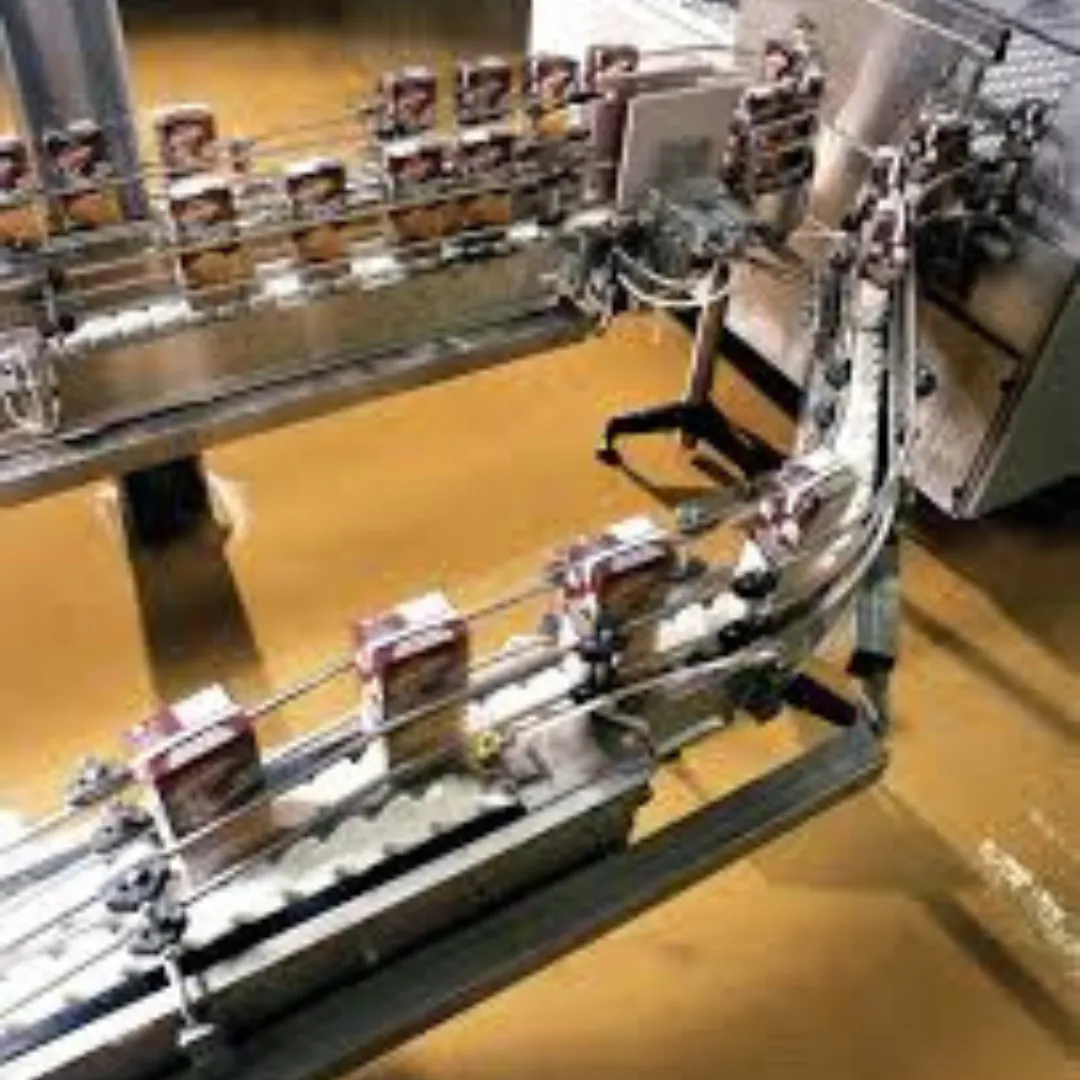
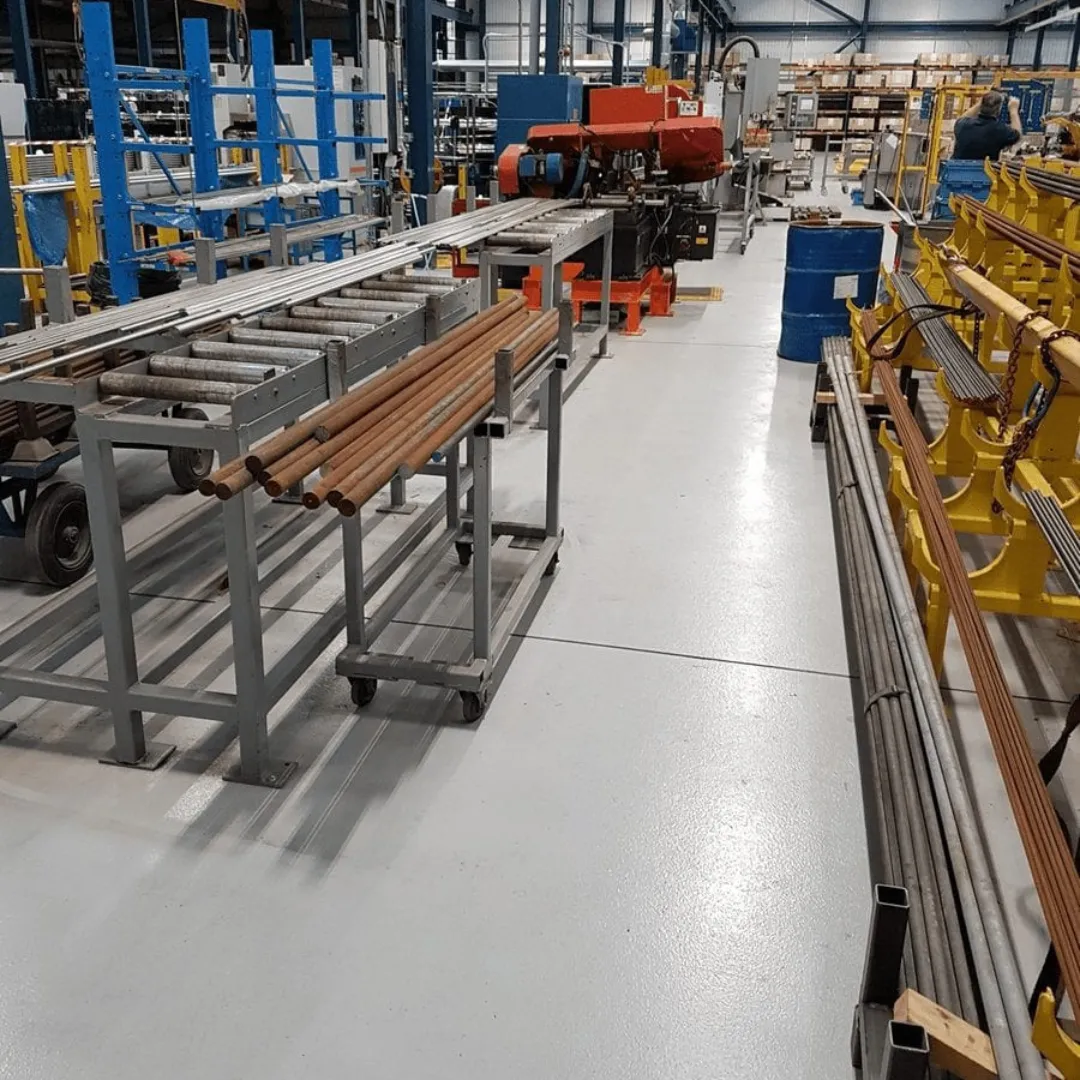
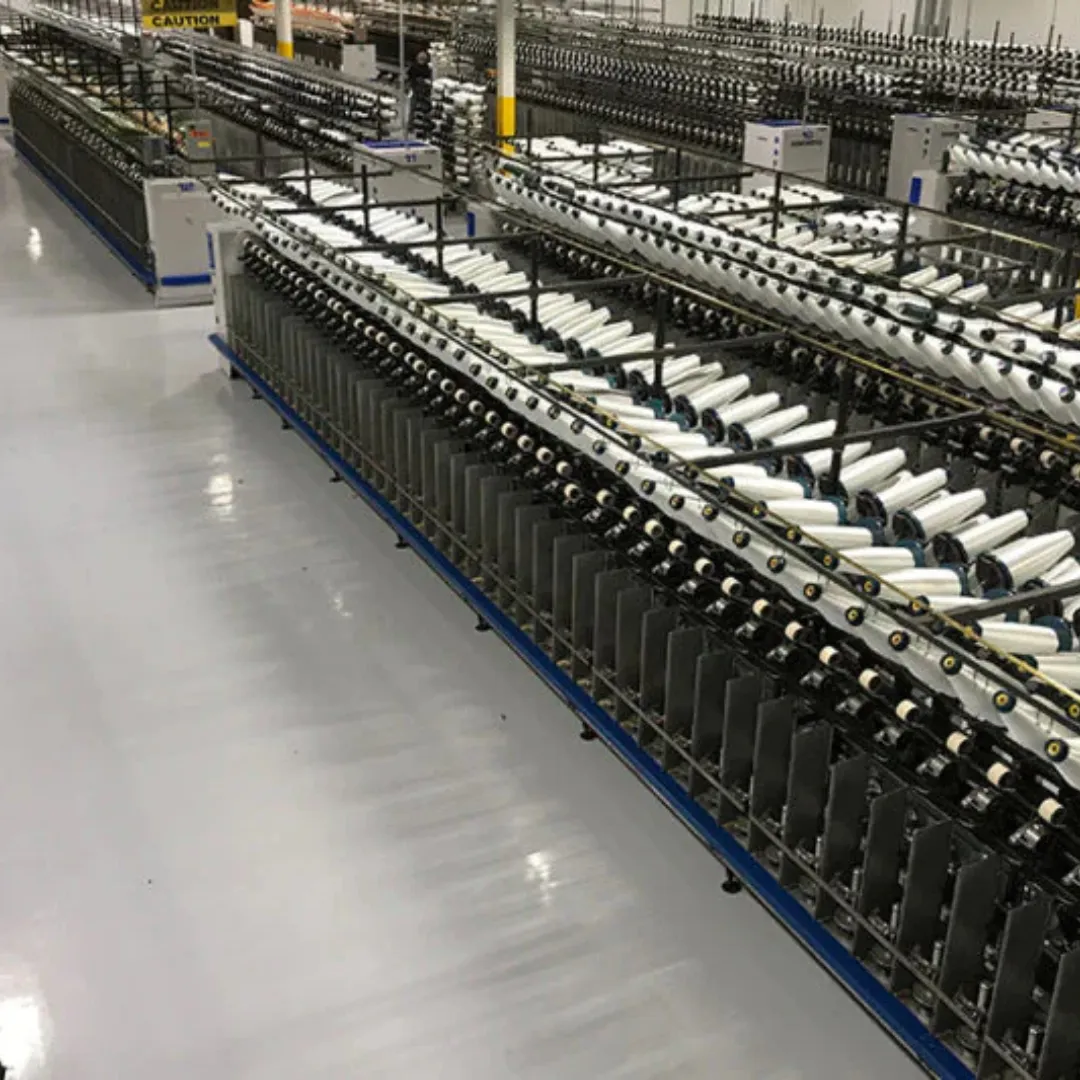
Why Used
Very common for factories and warehouses. Seamless, strong, chemical- and abrasion-resistant (depending on system), and customizable (colors, markings, anti-slip). Cost-effective for large spans.
Pros
Durable, smooth, easy to clean, fast to apply in many systems, good adhesion to prepared concrete.
Cons
Some epoxies can chalk or yellow under UV; can be brittle (crack-bridging limited), and certain epoxies are sensitive to prolonged solvent exposure or high continuous temperatures.
Best for
General manufacturing, warehousing, food packaging (with appropriate food-grade topcoats), light automotive.
2. Polyurethane (PU) and Polyurea topcoats / urethane cement
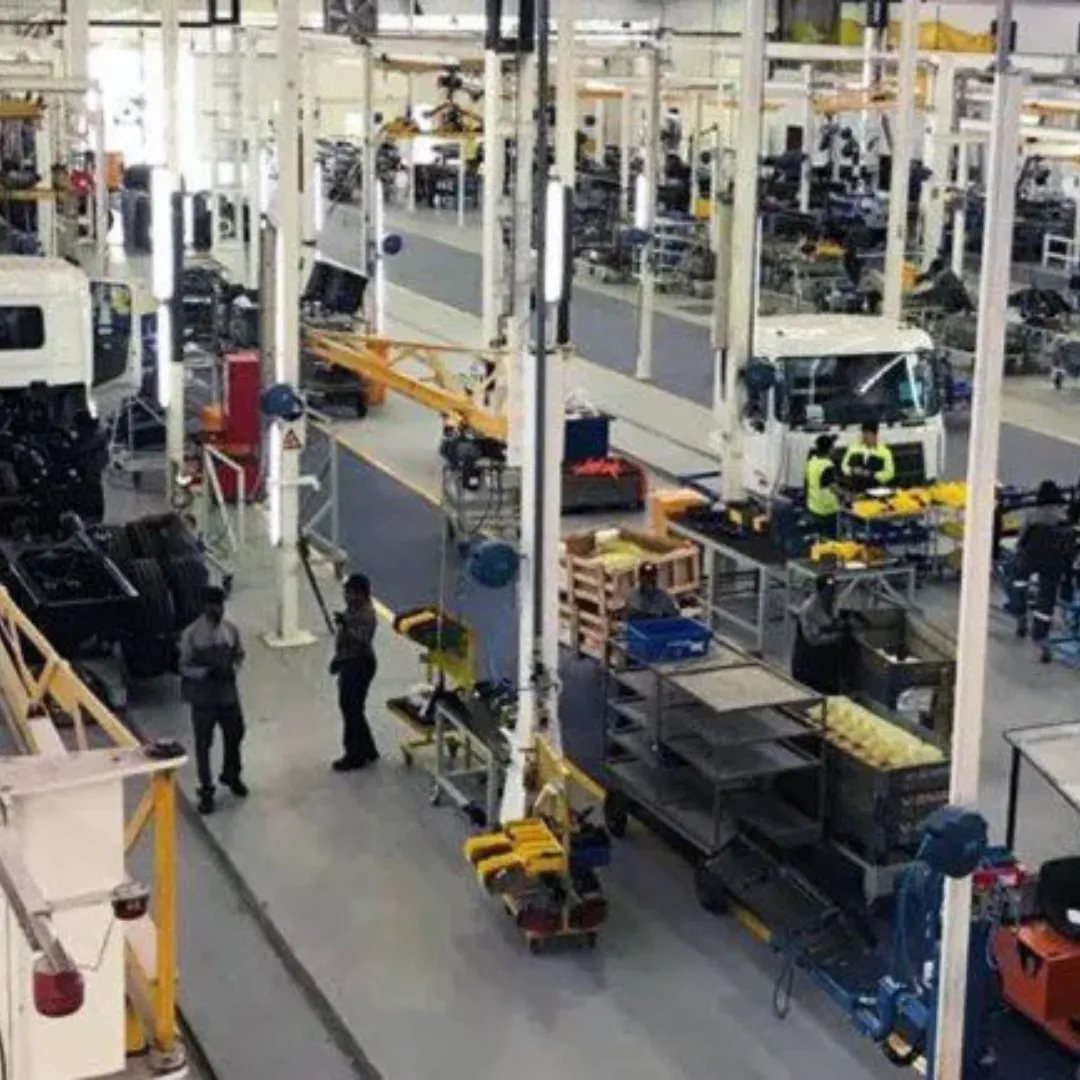
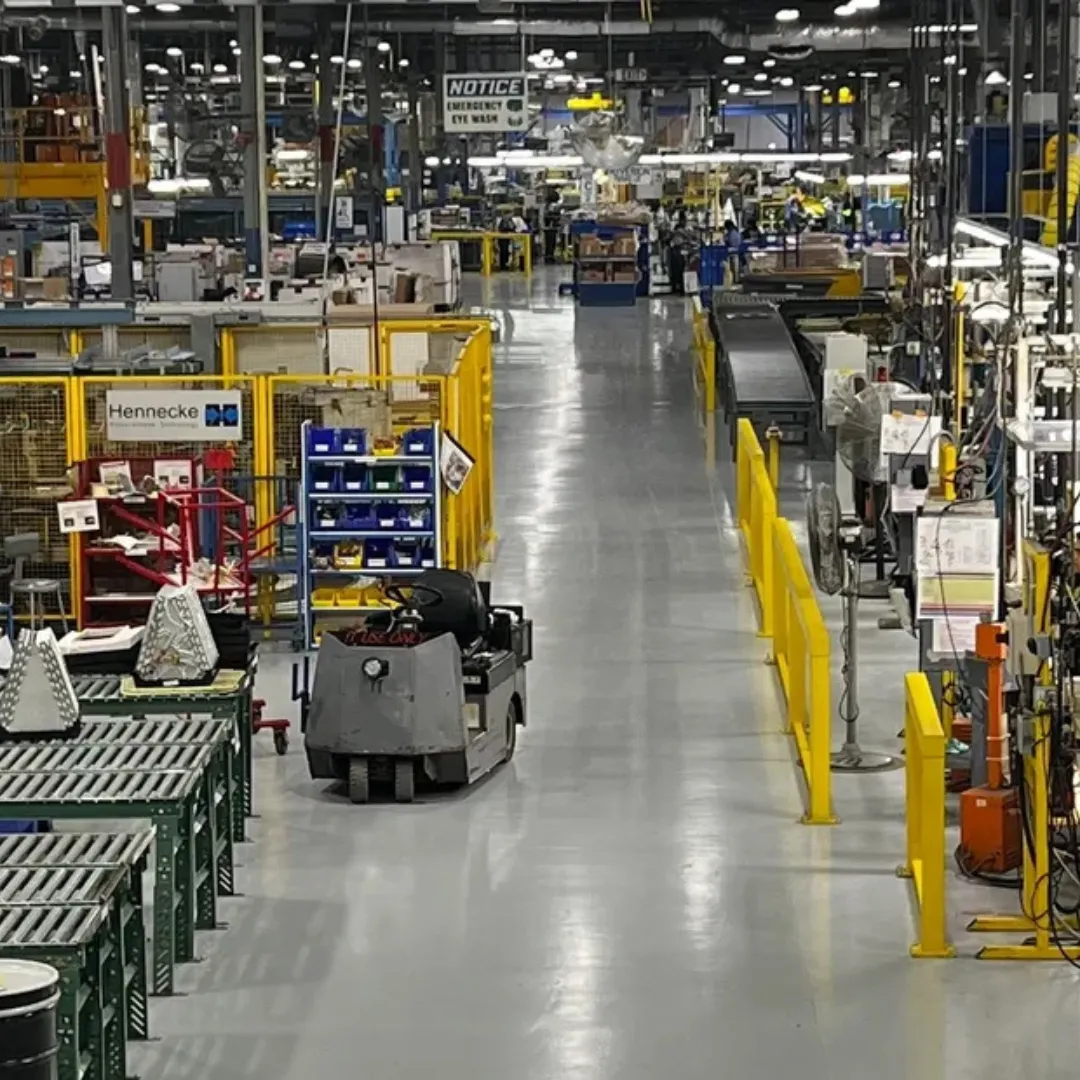
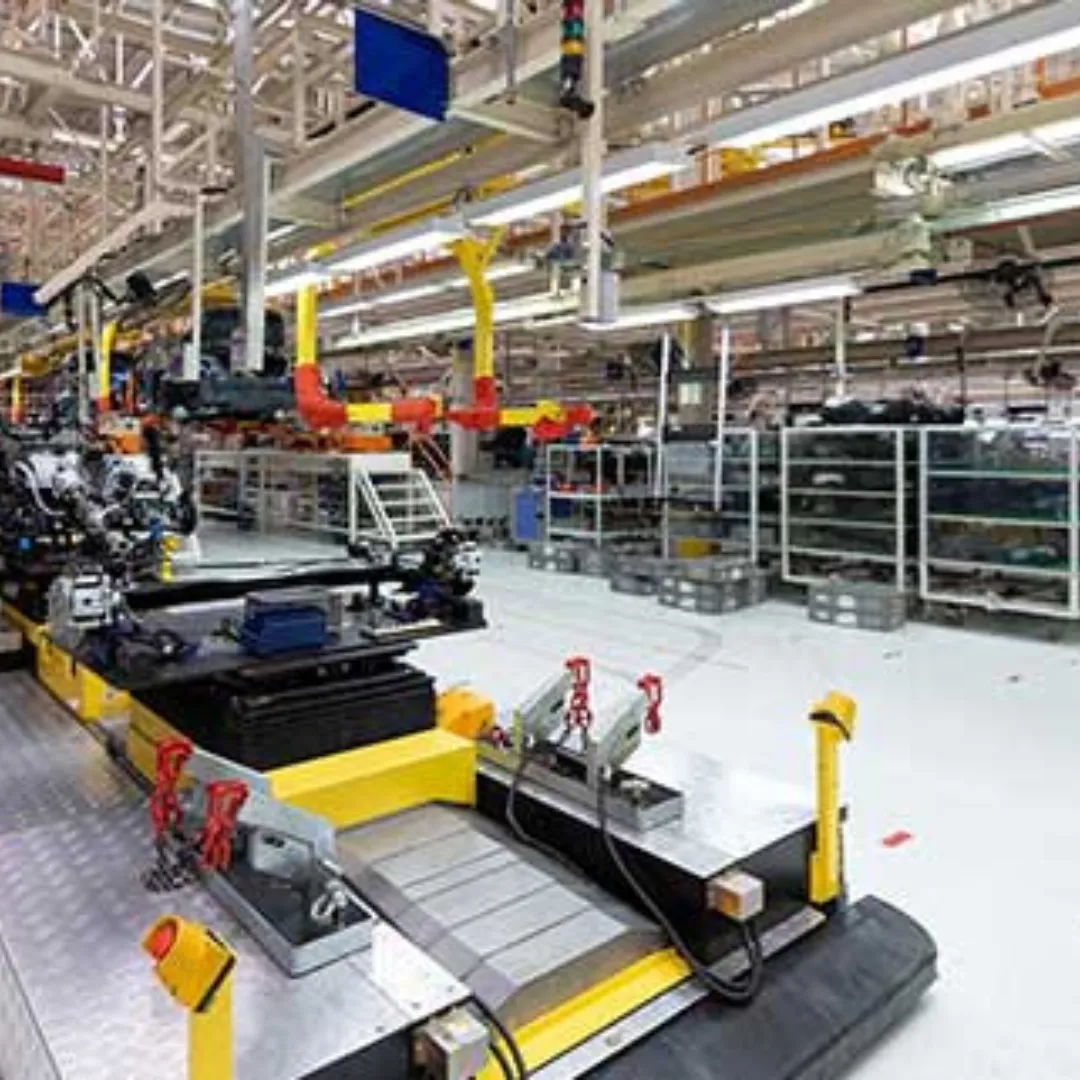
Why Used
PU offers excellent abrasion resistance, UV stability and better flexibility than many epoxies, so it tolerates substrate movement and temperature variation better. Polyurea cures fast and can return to service quickly.
Pros
UV stable, better gloss retention, more flexible, often more scratch/abrasion resistant.
Cons
Typically more expensive than epoxy; surface prep still critical.
Best for
Areas exposed to sunlight, repeated cleaning with aggressive detergents, or substrates with thermal movement.
3. ESD / Anti-static (static dissipative) flooring
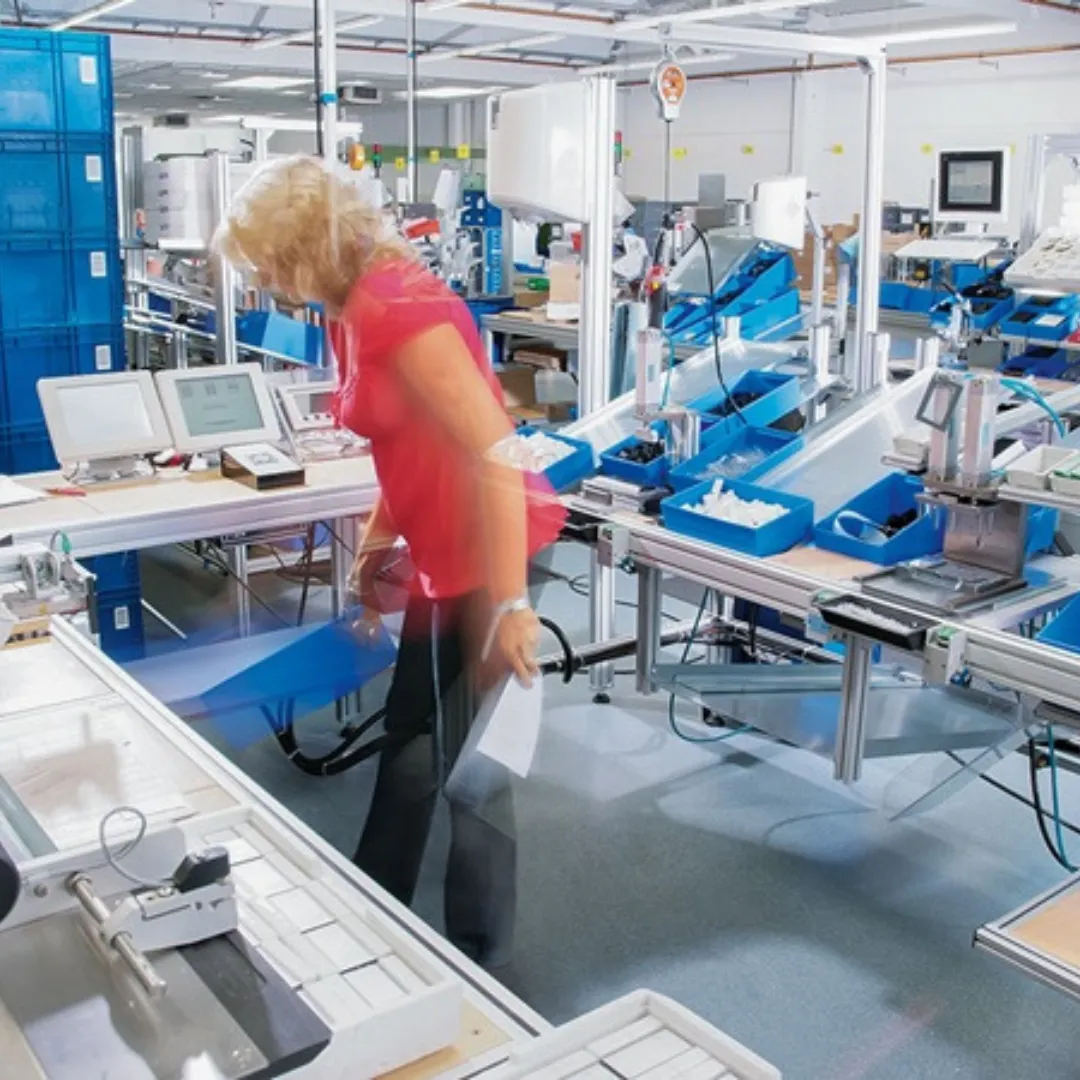
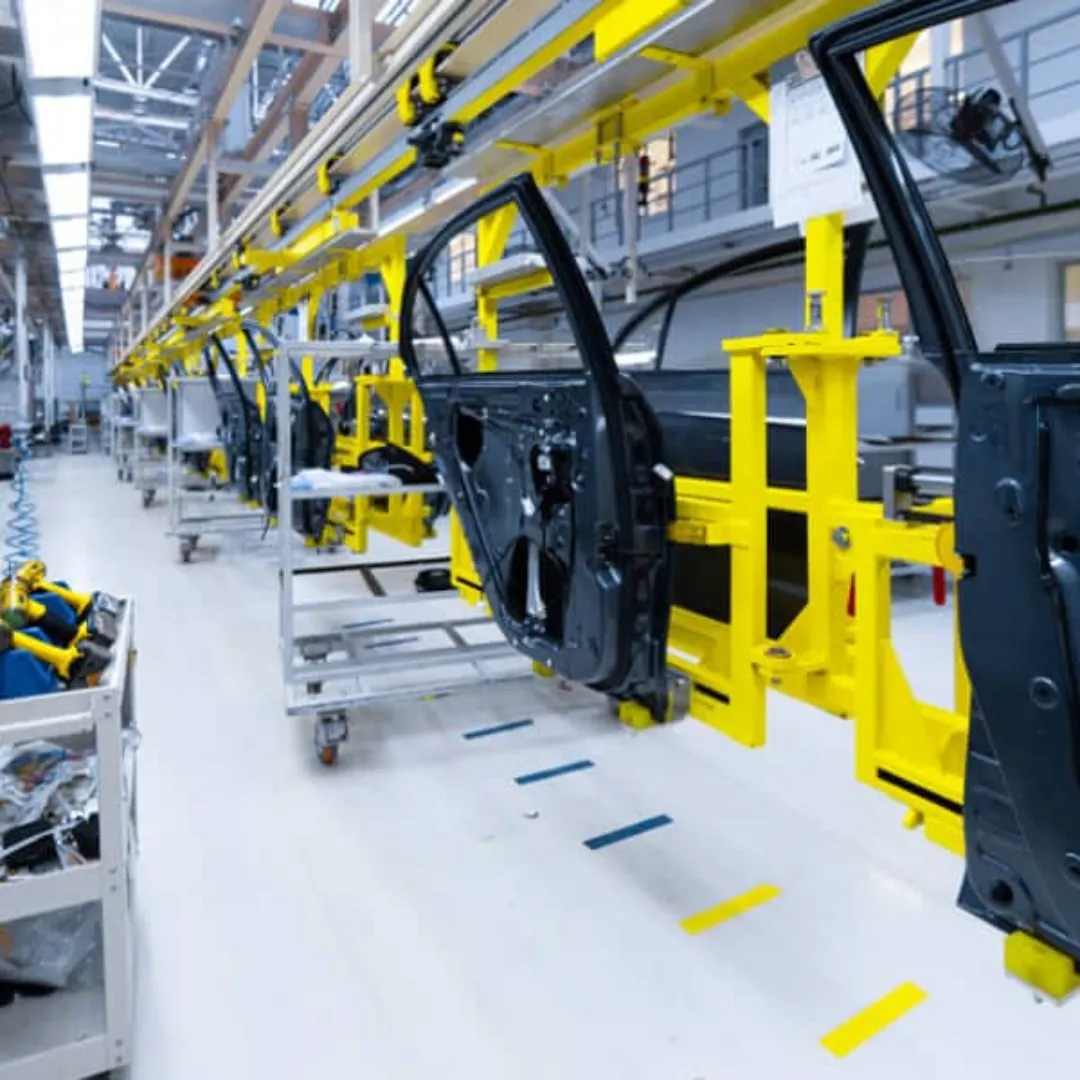
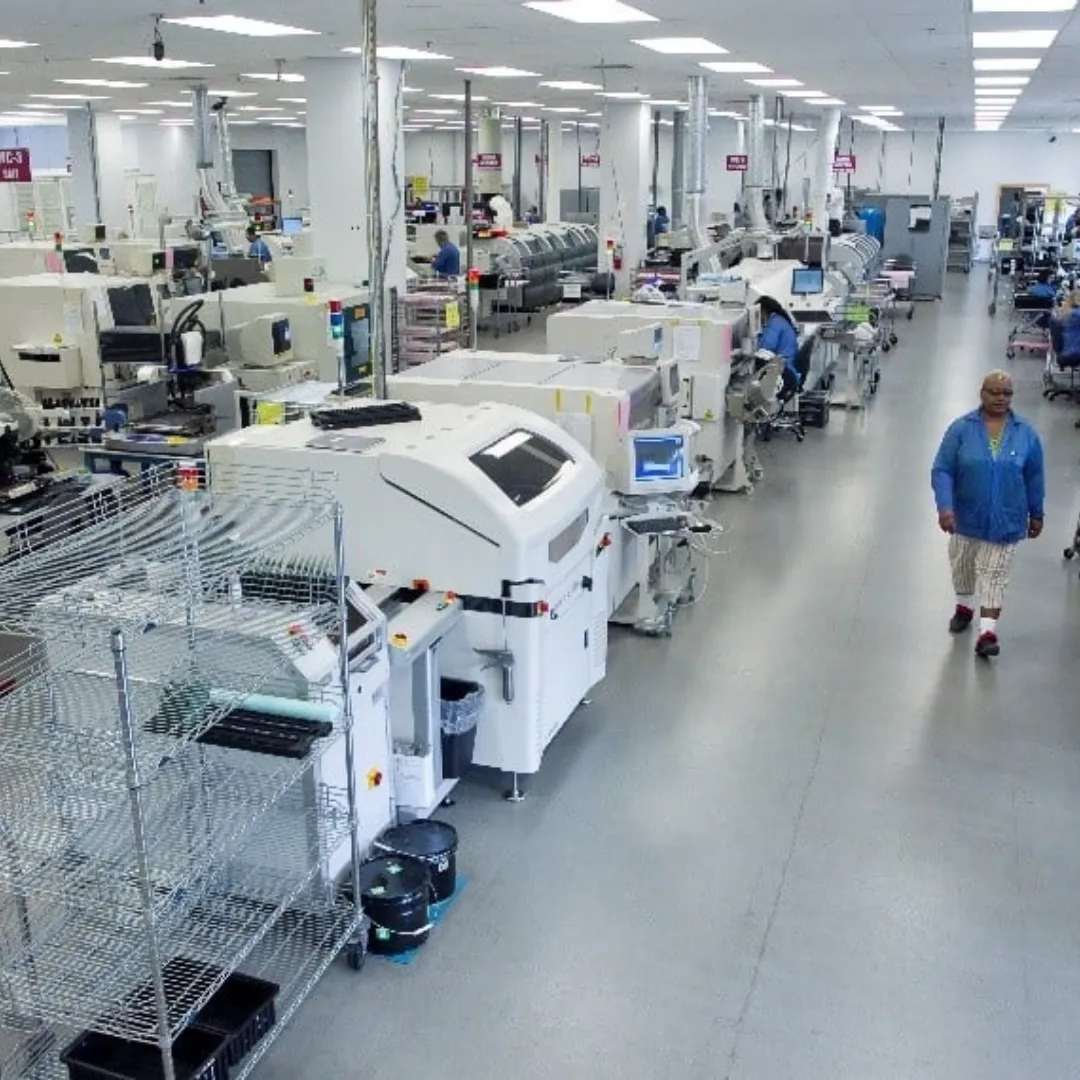
Why Used
Electronics assembly, PCB manufacturing, cleanrooms and any area where electrostatic discharge can damage components or create ignition risk. These systems incorporate conductive additives or grounding paths.
Pros
Protects sensitive devices, reduces fire/explosion risk in volatile environments.
Cons
Must be integrated into a full ESD control program (footwear, wrist straps, grounding). Not all ESD floors are equal—specify resistivity/grounding requirements.
Best for
Electronics, semiconductor, precision assembly, flammable dust/gas environments.
4. Urethane cement / Cementitious Polyurethane
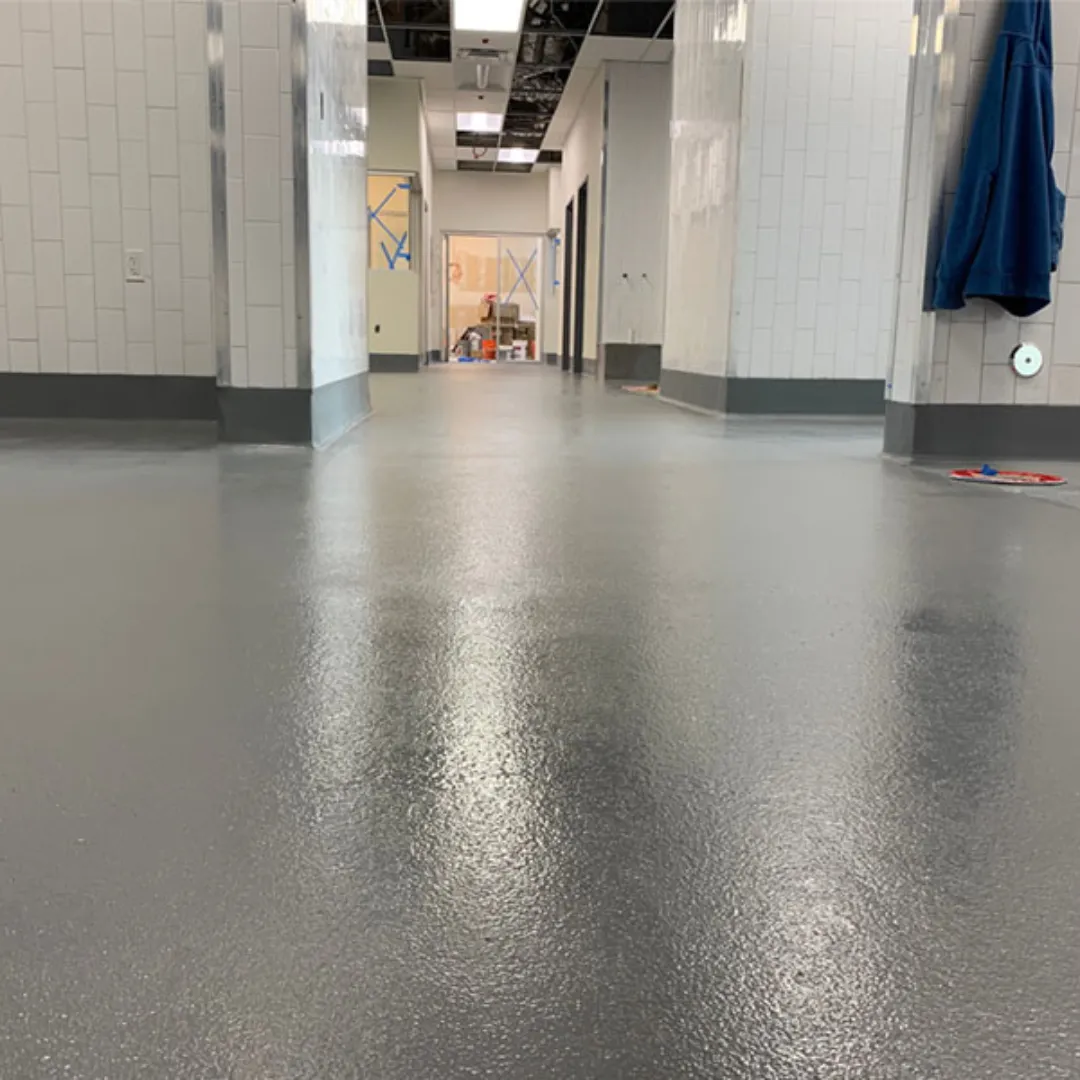
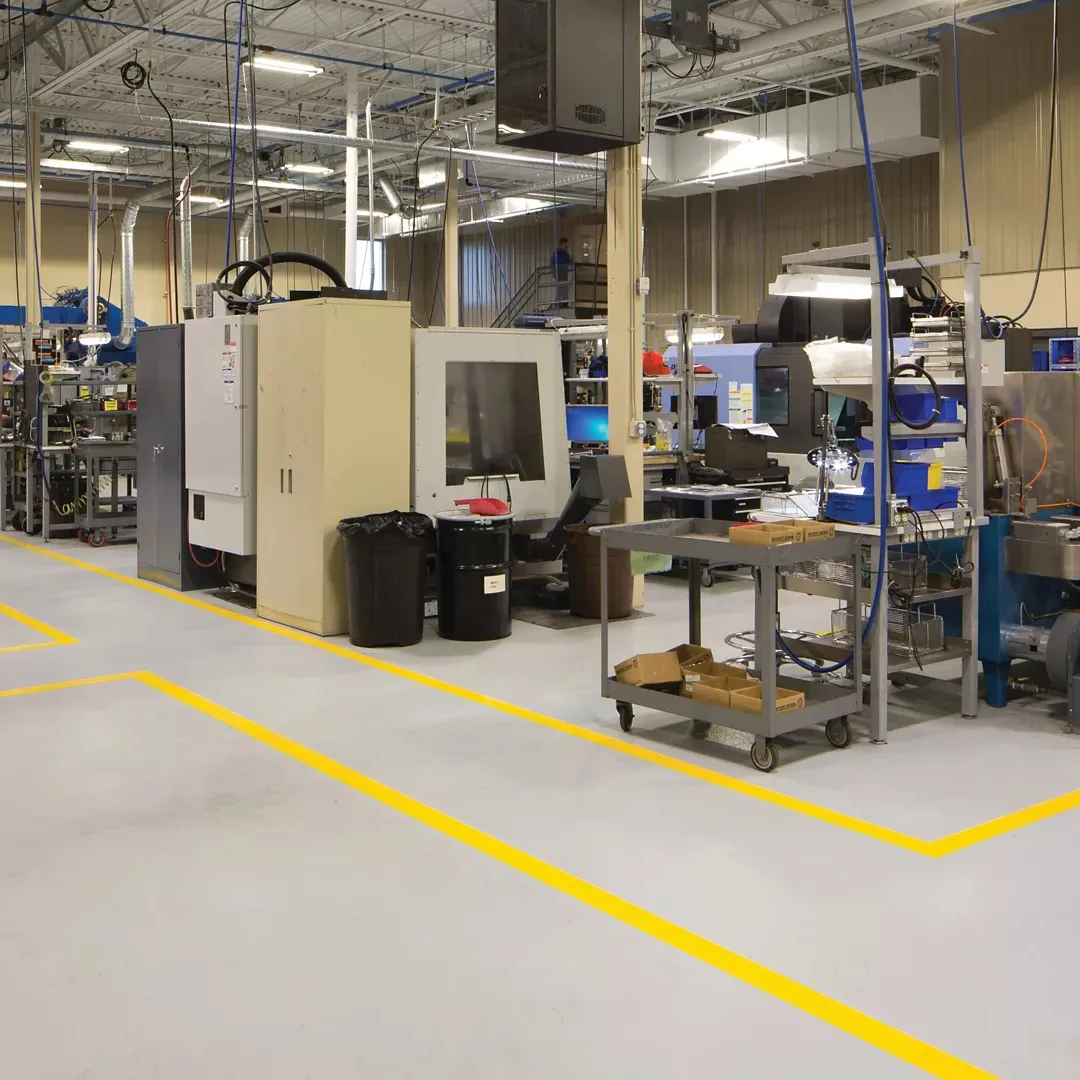
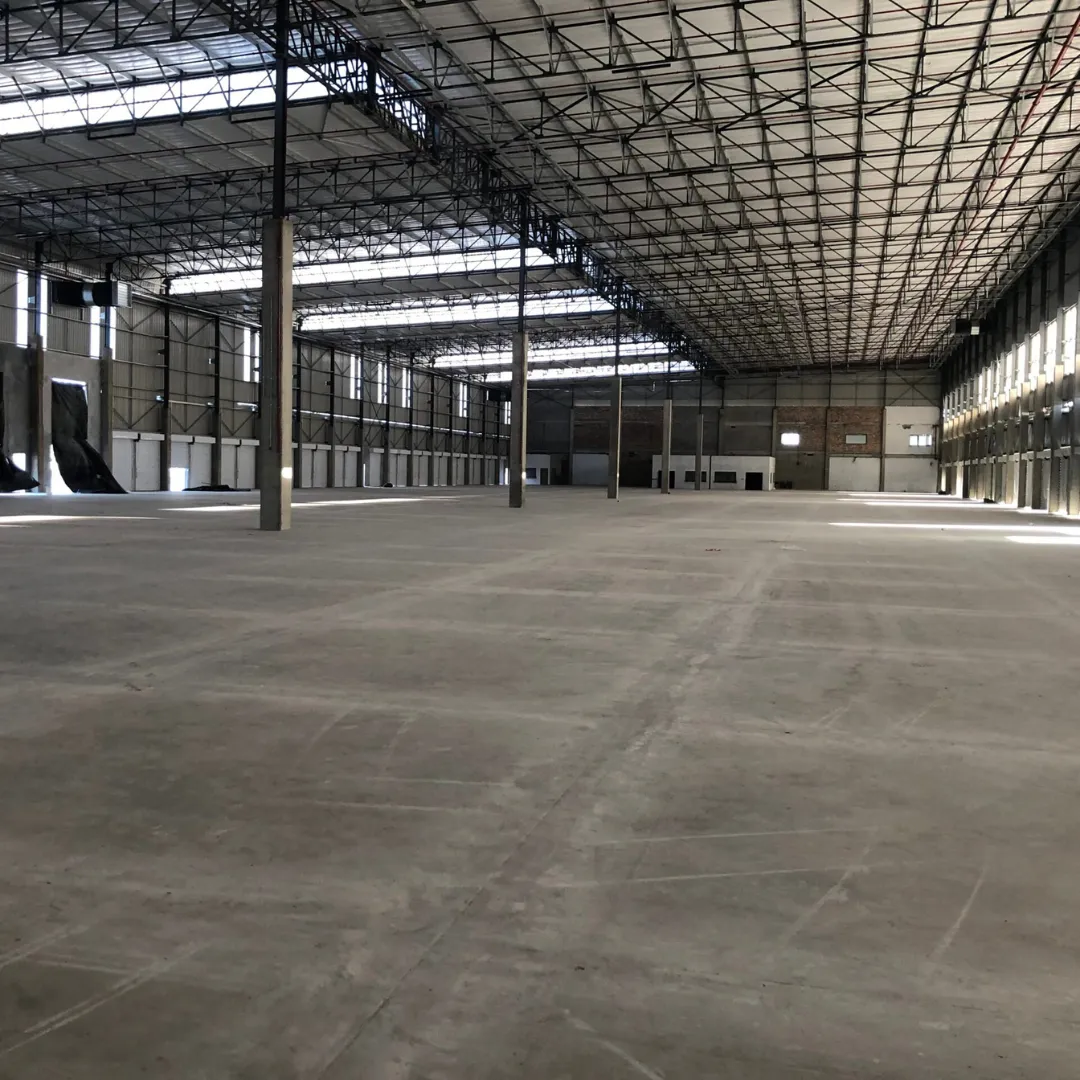
Why Used
Ultra-durable, very chemical-resistant (acids, solvents), and can be installed thicker for high-load areas.
Pros
Exceptionally durable, good for heavy-duty chemical environments.
Cons
Higher cost and longer installation windows.
Best for
Chemical mixing zones, battery rooms, heavy chemical exposure.
5. MMA (Methyl Methacrylate) & Polyaspartic Systems
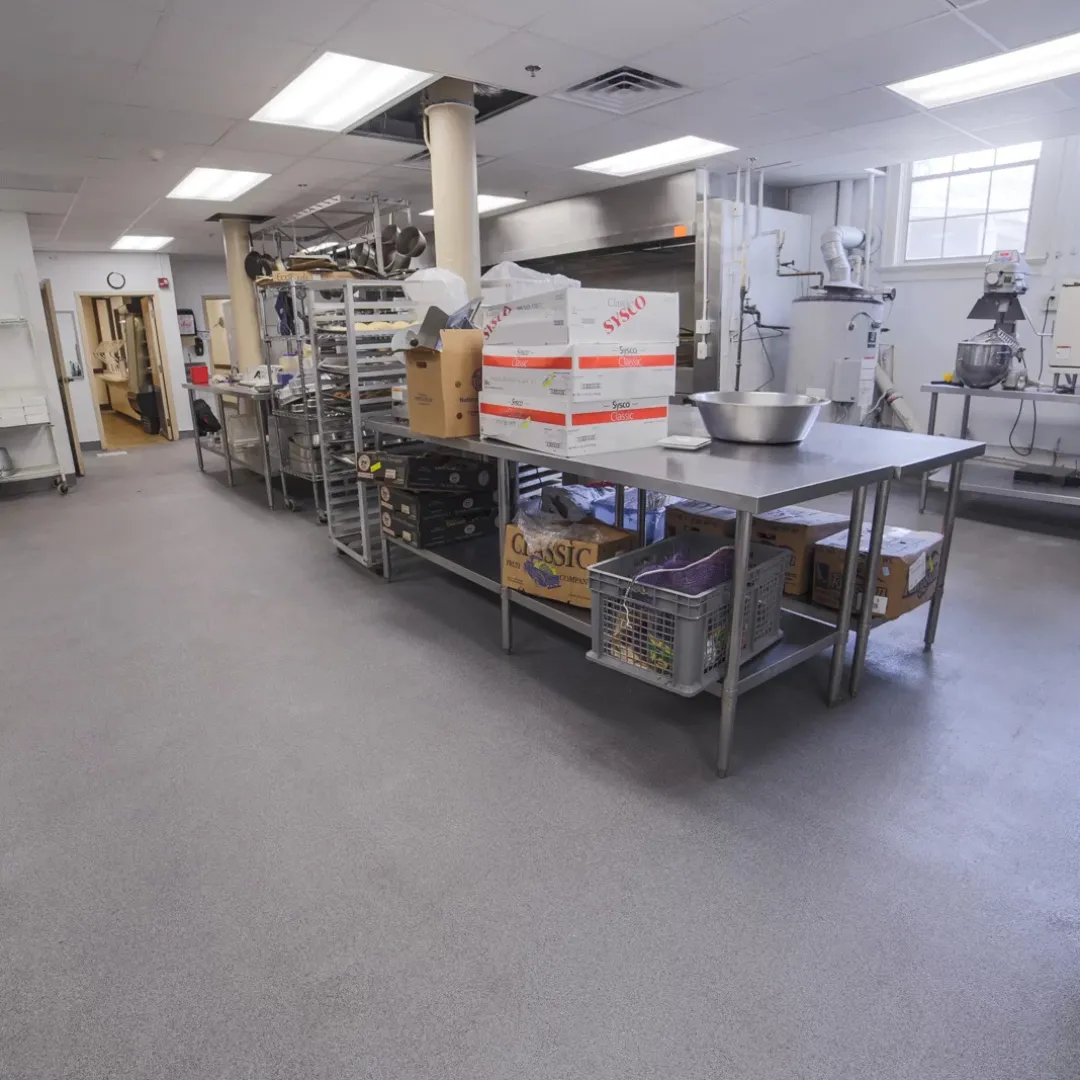
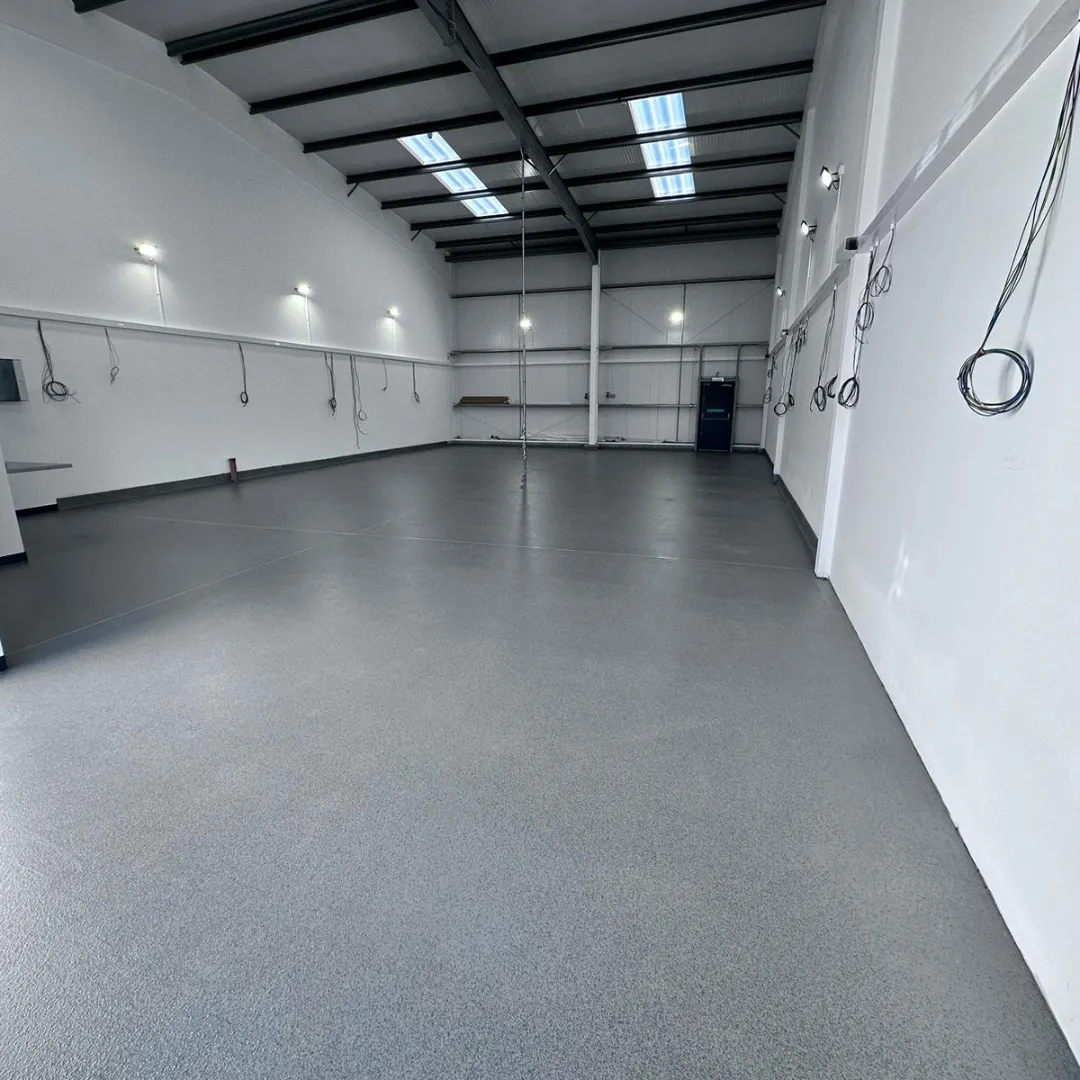
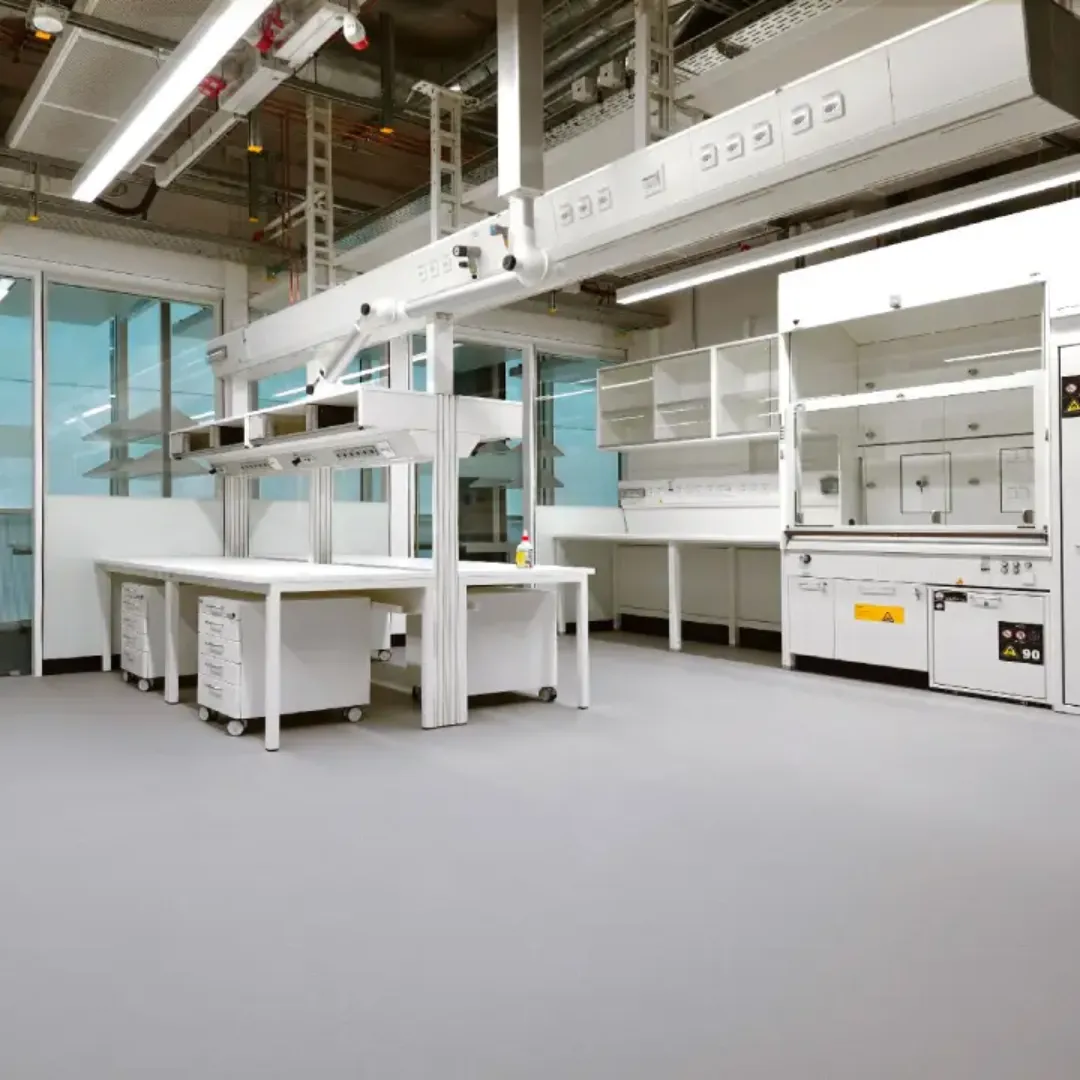
Why Used
Rapid cure coatings — beneficial when downtime cannot exceed a few hours to a day.
Pros
Fast cure, cold-weather serviceability, can be UV stable.
Cons
Higher material cost, strong odors during application (ventilation needed).
Best for
Quick return-to-service projects, sections that must be back online fast.
6. Polished Concrete

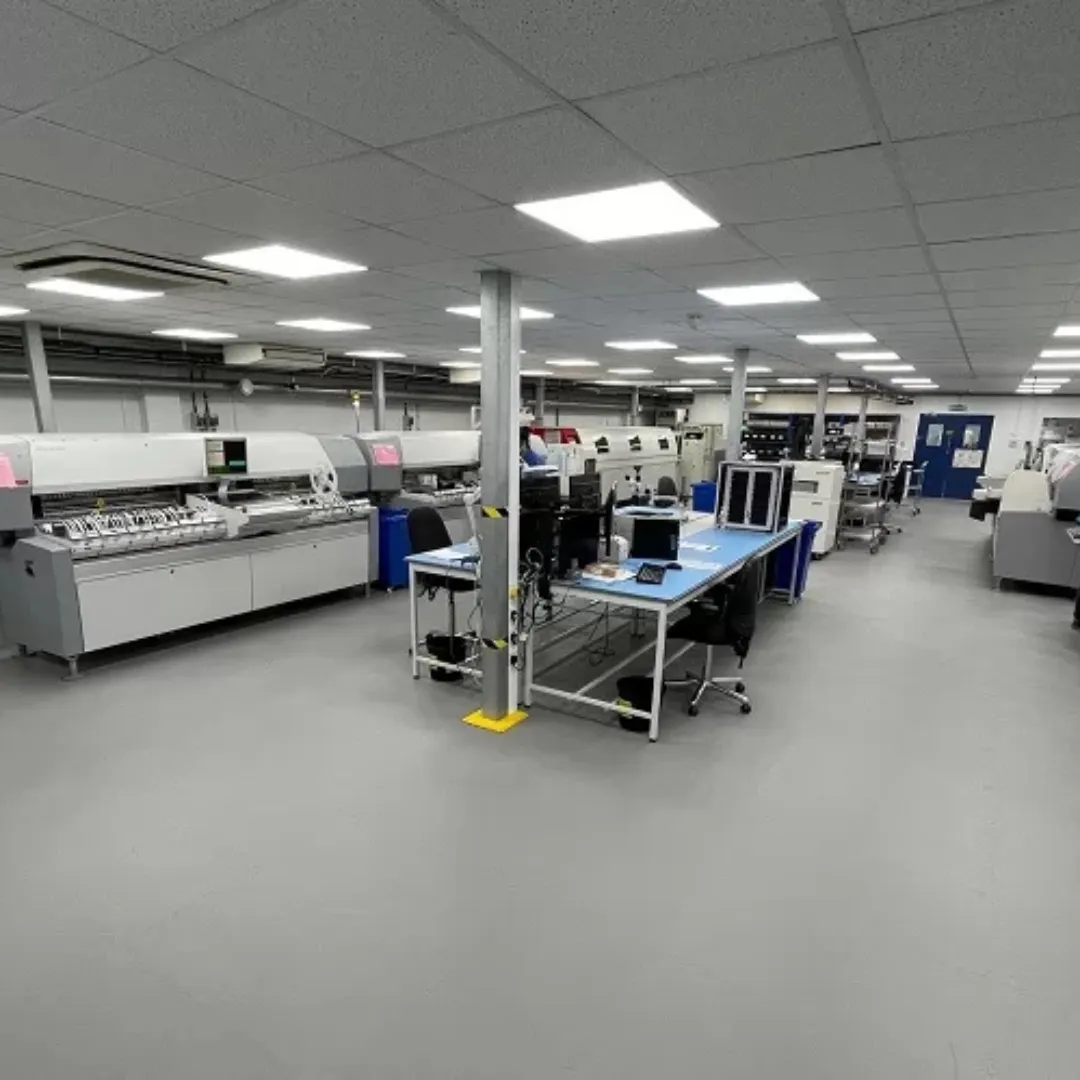

Why Used
When budget is tight and existing slab is structurally sound — polishing concrete can provide a durable, low-maintenance surface.
Pros
Low long-term cost, natural look, no coatings to peel.
Cons
Limited chemical resistance unless sealed; less customization; joints remain.
Best for
Heavy load areas where aesthetics aren’t critical and chemical exposure is limited.
Pakistan-specific considerations
Climate & environmental factors
Pakistan’s climate ranges from hot and humid (coastal/tropical) to arid and very hot inland, plus cold in northern regions. Thermal cycling and high ambient temperatures can stress coatings. Polyurethane topcoats and certain modified systems offer better UV and thermal performance. Use UV-stable topcoats if areas are exposed to sunlight. Copps Industries
Concrete substrate quality
Many existing Pakistani factory floors are old concrete with variable moisture, weak surface layers or poor compaction. Proper testing (moisture, compressive strength, tensile pull-off) is essential before recommending a resinous system. Moisture mitigation (moisture barrier priming or capping) is often necessary to prevent delamination.
Local availability & pricing
There are local contractors and suppliers in Pakistan offering epoxy and PU systems; price ranges vary with system, prep level and thickness. For context, local price guides show epoxy installations commonly quoted in Pakistan in the mid-range market — but always get a written scope and warranty. (Local suppliers offer ranges; confirm current quotes for your project.)
How to choose the right system for your assembly line?
Map the line’s loads
Identify forklift traffic, point loads, conveyor foundations, and whether heavy machinery sits on vibration isolation pads.
Chemical Exposure Matrix
List all liquids and gases that will contact the floor, with concentrations and spill frequency.
ESD Requirement
Are components sensitive to static? If yes, specify surface resistivity target (ohm range) and grounding details.
Cleanability & Hygiene Demands
Food and pharma often require seamless, low-porosity surfaces with coved junctions.
Access & Downtime Constraints
If the line cannot stop for more than a few hours, consider polyaspartic or fast-cure systems.
Budget & lifecycle cost
Include projected maintenance and replacement costs — the cheapest upfront is not always cheapest in 5–10 years.
Warranty & contractor capability
Choose experienced applicators who can show previous industrial installations and provide material/installation warranties.
Typical Installation Process
A reliable installation follows these stages:
Site survey & testing: Measure slab moisture (RH testing), flatness, and concrete integrity.
Surface preparation: Mechanical grinding or shot-blasting to expose a sound concrete profile (critical step — poor prep causes failures).
Repair & leveling: Fill cracks, joints, and voids with repair mortars and use self-leveling compounds where necessary.
Primer: Apply primer compatible with chosen resin; helps adhesion and seals dust.
Base system: Self-leveling epoxy or urethane cement base laid to required thickness (often 1–3 mm for coatings, thicker for heavy loads).
Optional middle layer(s): Broadcast quartz for thickness/strength or apply reinforcement where needed.
Topcoat: PU or epoxy topcoat with anti-slip additives if required. For ESD floors, apply dissipative systems and bonded grounding.
Curing & quality checks: Allow full cure, test adhesion/pull-off, and measure resistivity for ESD systems.
Markings & demarcation: Apply lane markings, safety zones, and signage.
Note: Proper ventilation, PPE and safety during application are essential — some materials emit strong VOCs during cure.
Maintenance Best Practices
- Daily cleaning: Dry sweeping to remove grit; mop or scrub with recommended detergents (pH-appropriate).
- Spill response: Clean chemical spills promptly with neutralizing procedure as required by the chemical’s MSDS.
- Periodic deep cleaning: Mechanical scrubbing with appropriate pads and detergents to remove built-up grime.
- Inspections: Monthly visual checks for wear, delamination, or surface crazing. Annual checks for joints and grounding continuity (for ESD floors).
- Repair: Small repairs should be made quickly to avoid water/chemicals reaching the substrate; budget for scheduled sectional recoats depending on wear.
- Avoid harsh abrasives: Use manufacturer-approved cleaning tools and avoid metal scrapers that gouge the coating.
Safety, Demarcation & Ergonomic Additions
- Use anti-slip aggregates in walkways and wet zones.
- Clearly mark traffic lanes, pedestrian paths and emergency exits with contrasting colors and reflective paints where needed.
- Add coved skirting in hygienic areas to avoid dirt traps at wall-floor junctions.
- For ESD areas create zoned markings showing where ESD footwear and wrist straps must be used.
- Consider floor-mounted anchoring pads and isolation under heavy vibrating machines to protect the coating.
Common problems and how to avoid them
| Problem | Cause | Prevention / Fix |
|---|---|---|
| Delamination/peeling | Poor surface profile, residual moisture | Proper shotblast/grind; moisture testing; use vapor barrier primers |
| Cracks reflecting through | Substrate movement or thermal cycling | Use flexible PU topcoats, control joints, reinforce substrate |
| Slippery when wet | Smooth high-gloss finish | Add anti-slip grit or use textured topcoat |
| Static discharge | Non-ESD flooring in sensitive zones | Specify ESD floor system and grounding |
| Chemical staining | Wrong system for chemical exposure | Choose chemically resistant urethane cement or appropriate epoxy |
Rough cost considerations (Pakistan) — ballpark (illustrative only)
Costs vary by system, surface prep and area. Local market quotes in Pakistan show wide ranges depending on materials, thickness and contractor. As a rough illustration (do not use for final budgeting — request local quotes):
- Basic epoxy coating (thin film) — lower thickness: economical for low-traffic zones.
- Self-leveling epoxy (industrial) — mid-range cost; common for assembly lines.
- PU / polyurea systems — higher cost, better UV/thermal performance.
- Cementitious urethane — premium for heavy chemical exposure.
(Example local price ranges are published by Pakistani contractors; always request itemized quotes including surface prep, joint work, repairs, primers, topcoats and warranty.)
Quick spec templates (pick & adapt)
General automotive assembly area (heavy traffic)
- Substrate prep: Shotblast to CSP 3–4, repair cracks.
- System: 3–4 mm quartz-filled self-leveling epoxy base + 0.5–1 mm PU topcoat with anti-slip in walkways.
- Optional: ESD variant if electronics are handled on the line.
Electronics assembly (ESD protective)
- Substrate prep: Grinder/shotblast, moisture check.
- System: Conductive primer + ESD dissipative epoxy or vinyl system with bonded ground paths.
- Test: Surface resistivity and grounding continuity per spec.
Food packaging & processing
- Substrate prep: CSP 2–3; moisture mitigation if needed.
- System: 3–4 mm food-grade epoxy or polyurethane, coved skirting, seamless finish.
- Coating: Non-toxic, easy-to-sanitize topcoat.
Case study Snapshots
Textile assembly plant, Gujranwala
Old concrete slab with 1–2 mm undulating finish. Recommendation: grind, repair joints, install 2–3 mm self-leveling epoxy with anti-slip in walkways. Result: reduced dusting, cleaner environment and fewer machine downtime events.
Electronics assembly, Lahore
New line with SMT and final test. Recommendation: complete ESD floor (conductive grid with 2-layer dissipative epoxy), bonded to earthing bus. Result: significant reduction in component failures due to ESD incidents.
Tendering & contractor selection checklist
- Request project references for similar assembly line installations.
- Ask for site visit and moisture/adhesion testing report included in quote.
- Get a written warranty (materials + workmanship) and a maintenance schedule.
- Request MSDS for all materials to confirm worker safety and cure requirements.
- Confirm return-to-service times and any displaced operations during work.
- Check for accreditations or certifications (ISO, manufacturer-approved applicator badges).
Final recommendations — practical next steps
Conduct a site survey & tests (moisture, pull-off, mapping). This identifies hidden constraints.
Produce a requirement matrix (loads, chemicals, ESD needs, cleaning regimes, downtime limits).
Request at least three detailed quotes (itemized: prep, repair, primer, base, topcoat, anti-slip, markings).
Check applicator references and visit past installations if possible.
Plan phased works if your assembly cannot stop entirely — do night/weekend segments or sectional replacements.
FAQ'S
Tile substrates can delaminate; surface prep and mechanical keying are mandatory. Often removing tiles and preparing the slab is the safer long-term solution.
Cure times vary: some polyaspartic/polyurea can be ready in hours; standard epoxies may need 24–72+ hours for traffic and up to 7 days for chemical cure. Choose fast-cure systems when downtime is limited. (Always follow manufacturer guidelines.)
ESD systems can be more sensitive to surface abrasion; maintenance and periodic resistivity checks are important to ensure continued protection.
Joints should be honored or saw-cut and filled with flexible sealant. Heavy machine seats may need isolated pads or pit foundations to prevent crack transmission.
